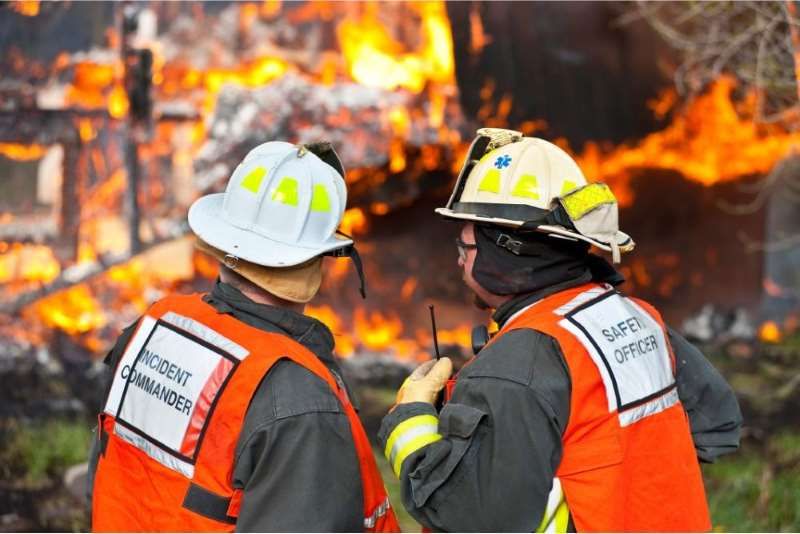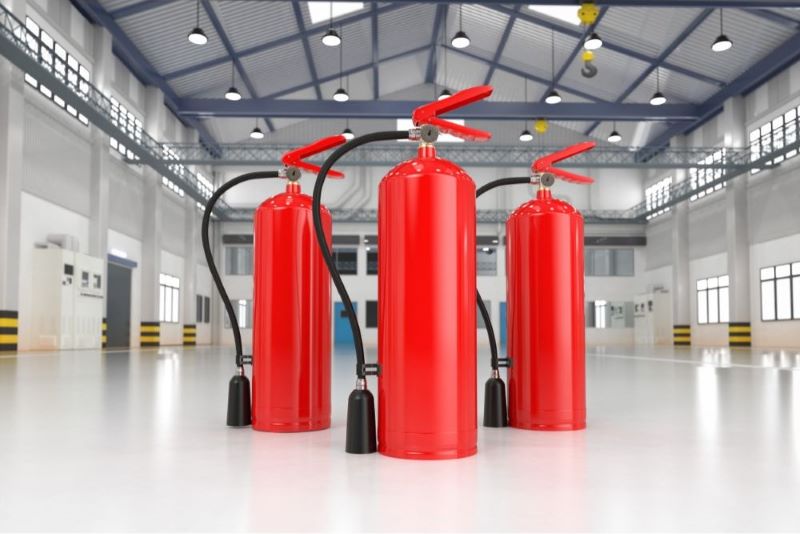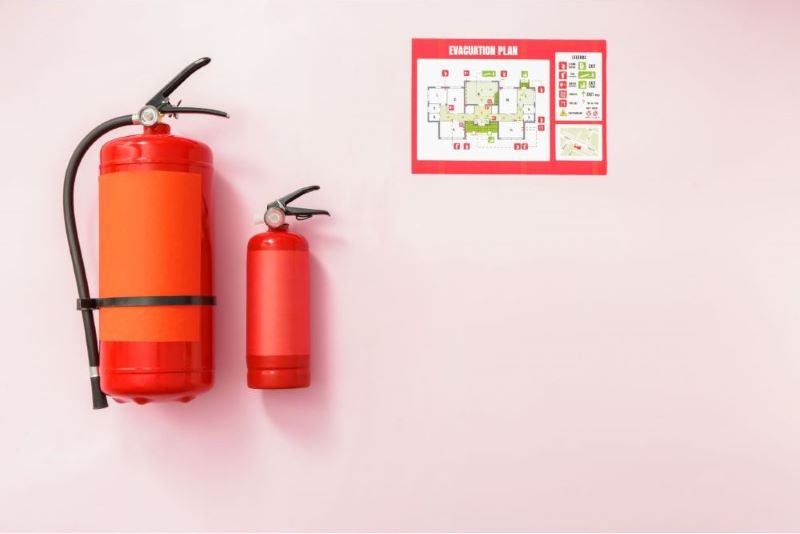A workplace fire can have catastrophic effects on your neighbourhood. Not only could there be casualties and physical damage, but there could also be job losses and a loss of an essential good that the businesses supplied to the community.
Employees and building managers can prevent them by taking accountability and implementing appropriate policies and practices at the workplace. This article provides tips for fire safety in the workplace in York PA, as well as ideas on substances that can catch fire or explode.
Fire Safety Hazards
Three components are required for a fire to ignite: heat, fuel (anything that burns), and oxygen.
- Heat includes anything that can get extremely hot or produce sparks, such as heaters, lighting, open flames, electrical equipment, and things used by smokers (cigarettes, matches, etc.).
- Fuel can be made from many materials, such as wood, paper, plastic, rubber, foam, waste materials, loose packing, and furniture.
- The air surrounding us is one of the sources of oxygen.
Fire Safety in the Workplace
When it comes to workplace fire safety, sadly, too many business owners have the attitude that “it won’t happen to me.” However, fire safety is an essential part of risk management that must be taken into careful consideration.
Businesses may suffer greatly from a fire since it can endanger the public’s and employees’ safety, damage expensive supplies, and damage the reputation of their business. Also, there are several fire hazards in most businesses. So, what steps can you take to make your workplace more fire-safe? Here are seven tips for fire safety in the workplace.
1. Conduct Extensive Risk Assessments

Risk assessments are not only legally required for businesses with over five employees, but they are also important in protecting the business from damage.
Risk assessments aim to pinpoint the potential sources of fire: what could start a fire? The next step is to evaluate the danger level, think about possible casualties, and explore ways to reduce the risk of fire. After that, you may set regulations in effect that are appropriate for the risk level. To guarantee fire safety in the workplace in the long run, risk assessments should be periodically reviewed and perhaps revised.
2. Ensure That Employees Have Received Fire Safety Training
An extremely difficult scenario may get worse if employees are not trained in or knowledgeable about fire safety protocols. Employees will, however, be prepared for a workplace fire if they have received the proper training and have gotten hands-on experience during fire drills. They are able to carry out the procedures specified in your risk assessment and safely guide individuals out of the area or building.
3. Designate Fire Safety Officer

At least one fire safety officer needs to be present at work. These fire safety officers are employees that oversee the development and upkeep of fire safety protocols. They will also need to arrange for evacuation in case of a fire and make sure nobody is left within the building’s perimeter.
4. Maintain a Tidy and Clean Workplace
The “fire load” of an area or building rises when there is more clutter surrounding the workplace. That is to say, there are more things in the workplace that could catch fire. Also, cluttered areas can hinder prompt evacuation, so it’s important to keep hallways, staircases, and fire exits as clear as possible.
All stock should be kept in a secure space with the proper controls installed for items that ignite or contain liquids. Also, ignited substances must be kept in spill-proof cabinets or containers.
5. Fire Safety Equipment

If a fire happens in the workplace, the fire safety equipment will alert the public and employees and maybe put out the fire before it gets out of control. Make sure that your workplace is equipped with fire prevention equipment like sprinklers and fire extinguishers, smoke alarms, fire exit signs, lighting, and ladders if needed.
Install smoke alarms outside each office and on every floor of the building, including the basement.
Each month, test your alarms and change the batteries once a year, or anytime the alarm “chirps,” a sign that the battery is low. A malfunctioning smoke alarm cannot save your life; therefore, never “borrow” its battery. Any smoke alarm that is older than ten years should be replaced. Consider adding an automatic fire sprinkler system for whole-building safety.
6. Clear All Pathways and Designate Emergency Exits
Exits for emergencies must always be left accessible. Ensuring that emergency exit signs are well-lit and that emergency escape blueprints are posted is also essential. Take proper care of these things and deal with any problems that are blocking visibility right away.
7. Use Electricity Responsibly

Electric appliances that produce smoke or strange smells should be unplugged right away and repaired or replaced before using them again. Any electrical cord that is frayed or cracked should be replaced. Only one electrical cord should be inserted into each outlet. Keep all cords out of underrugs.
Summary
Any business, regardless of industry, needs to prioritise fire safety since it can occur anywhere and at any time. Every business needs to have a complete emergency plan in place, follow established fire rules, evaluate current fire hazards thoroughly, and have an in-depth understanding of fire protection equipment. You can lessen the possibility of a fire occurring in your workplace and make sure that employees are aware of what to do in the event that one does occur by providing training and planning.
Every workplace needs to appoint one or more “responsible persons” who are in charge of conducting regular fire risk assessments. Lawfully, they are nevertheless accountable for following the directive, even if they delegate this responsibility to another capable individual.
Depending on the business’s operations and associated risks, deep training can be required. To ensure that fires do not occur in the first place and that individuals as well as property are saved in the unfortunate circumstances that they do, it is important that every employee at the workplace undergo extensive training and have an understanding of fire safety.
By following these seven tips on fire safety in the workplace, the possibility of a fire igniting will be minimised.


